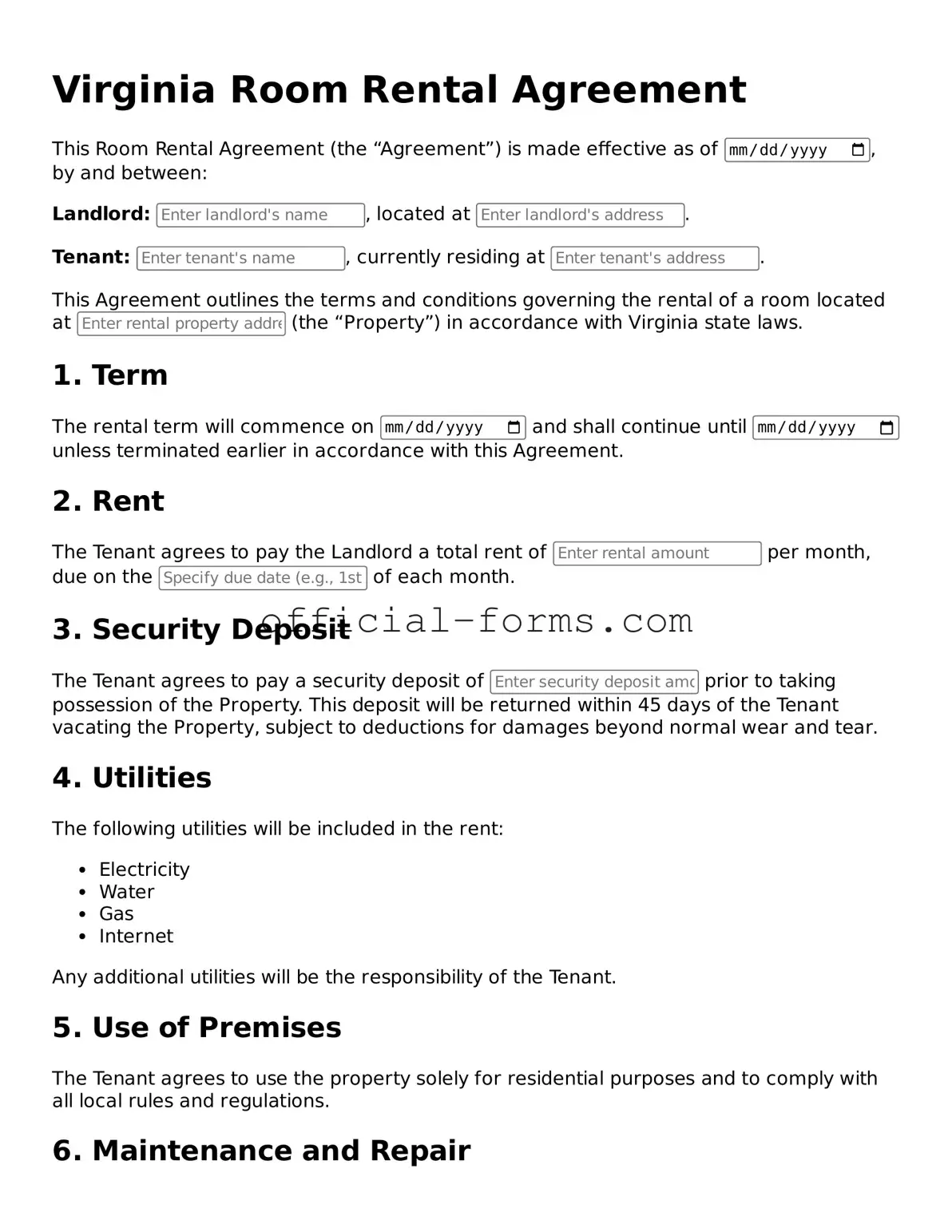Official Virginia Room Rental Agreement Document
The Virginia Room Rental Agreement is a legal document that outlines the terms and conditions between a landlord and a tenant for renting a room in a residential property. This agreement serves to protect the rights of both parties, ensuring clear communication and understanding regarding rental payments, responsibilities, and property usage. Familiarity with this form is essential for anyone looking to rent or lease a room in Virginia.
Open My Room Rental Agreement Now
